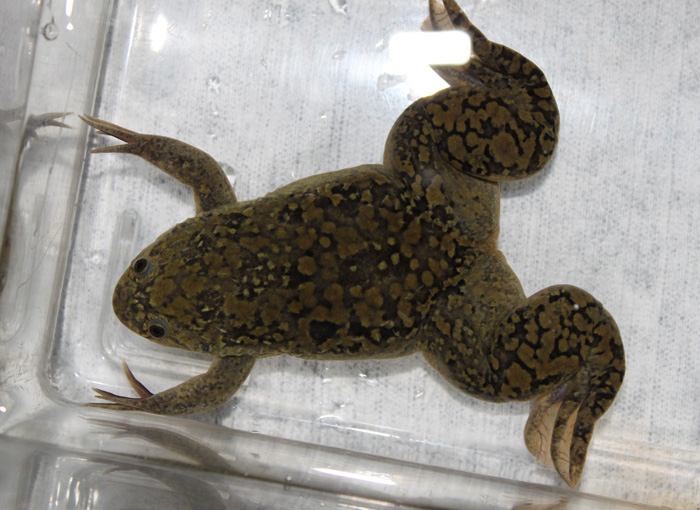Frogs Returning in February

The U.S. Army Center for Environmental Health Research will welcome the African clawed frog (Xenopus laevis) back into its laboratory this month to study the level of toxicity in periodate, a compound that could be used to replace perchlorate.
Perchlorate is most commonly used for propellants in rockets and fireworks. As extensive as its use is, an increasing number of studies show perchlorate contamination can have negative effects on the environment and human health.
Together with the U.S. Army Institute of Public Health, USACEHR scientists will conduct an Amphibian Metamorphosis Assay to determine any toxic effects of periodate on the normal functions of the hypothalamic-pituitary-thyroid axis, which is part of the endocrine system responsible for metabolism.
The AMA is a well-studied Tier 1 screening protocol used to evaluate chemicals that potentially interact with the estrogen, androgen or thyroid systems, and the only assay that detects thyroid activity in an animal undergoing morphological development.
The Environmental Protection Agency uses the AMA as part of a larger Endocrine Disruptor Screening Program to help with regulatory decision-making.
The EDSP formed as a result of the Food Quality Protection Act and the Safe Drinking Water Act amendments in 1996 in an effort to identify chemicals that produce negative effects on the endocrine system, potentially leading to diabetes, thyroid disease, growth disorders and more.
The USACEHR's role in the study itself includes an extensive preparation period and three 21-day test periods, all of which will take approximately one year to complete.
"We're really looking forward to this because within the USAMRMC, we're the only lab with this capability," said Col. Thomas Timmes, USACEHR commander. "We have a very unique aquaculture mission."
The USACEHR's unique aquaculture facilities allow their scientists to house and study frogs as opposed to other USAMRMC labs that may study rodents or other small mammals.
With other USAMRMC labs attracted to the USACEHR's unique capabilities, the USACEHR will invite other veterinarians to visit and learn from the study.














